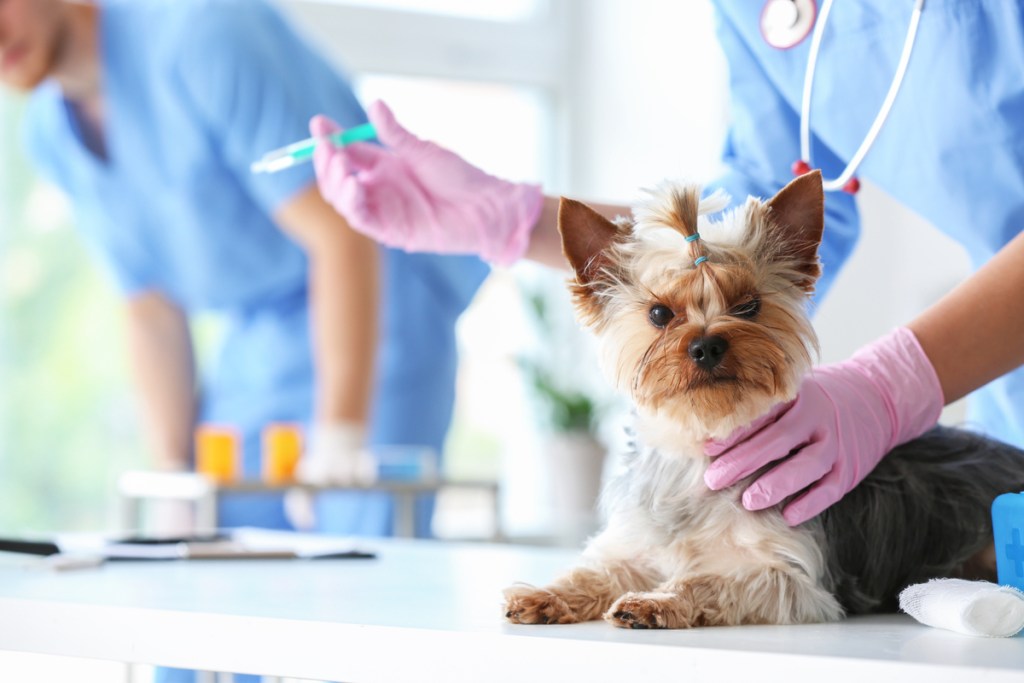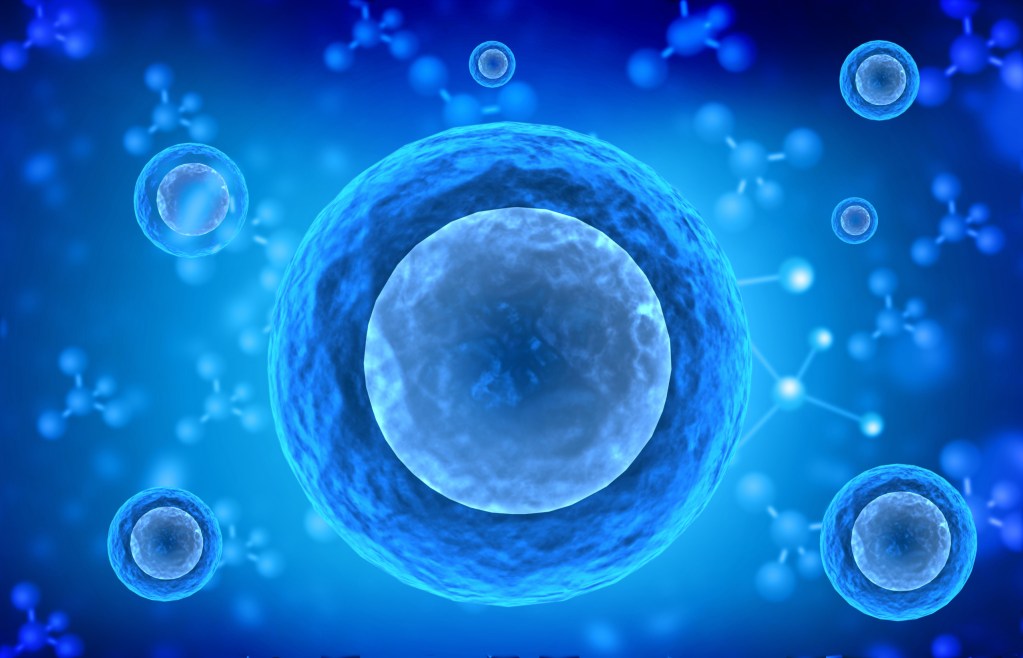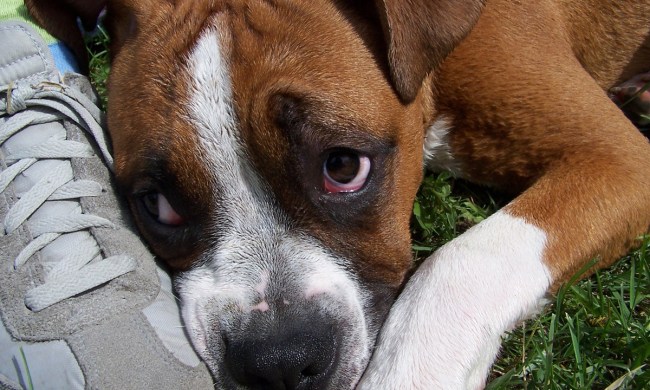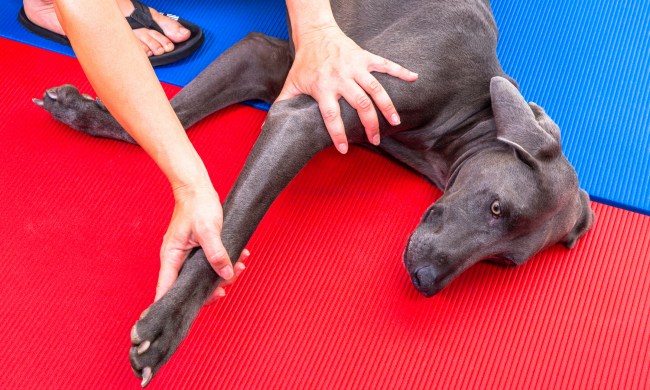Pet owners want the very best for their dog or cat, investigating what will give their pets the best quality of life — from healthy food to pet insurance. Thanks to advancements in medical research, veterinary medicine, and technology, there’s an additional way pet parents can potentially make their dog or cat’s recovery from certain types of injuries or illnesses occur faster: It’s called stem cell therapy, Acti-Stem therapy, or stem cell regenerative medicine.

What is stem cell therapy?
According to Lazhar Ichir, founder of Breeding Business, “Stem cells are usually taken from your animal’s fat tissue or blood plasma. They’re then separated from other cells and put back in the animal, usually by injecting them directly into the problem area.” Ichir notes that this treatment option has the potential to treat a variety of injuries and ailments:“Stem cells are being used to treat illness and heal injuries in pets. As the procedure is perfected, this could be the answer to dogs or cats with diseases like diabetes, arthritis, incontinence, and hip dysplasia. Stem cells are now being used to repair muscles, joints, and ligaments that have been damaged by arthritis or injury.”Veterinarians around the world are currently working in conjunction with biopharmaceutical firms, including VetStem Biopharma, Ardent Animal Health, and Gallant, to offer stem cell therapy to dogs and cats with specific illnesses and injuries. Although it’s been around for well over a decade, Charli Burbidge, zoologist and co-founder of Petz, explains, “Stem cell therapy is the latest and newest form of regenerative medicines for our furry friends. It helps to improve the quality of their life by repairing damaged tissues and healing musculoskeletal injuries. The therapy involves the accumulation of specific, high-versatile cells from a pet, which are then injected into damaged or diseased limbs, fractures, and ligament injuries.”
 Medical research and stem cell therapy advancements for dogs and cats are happening quickly. According to information released by Ardent Animal Health, stem cell therapy is being used on dogs and cats that are having issues related to arthritis, gum disease, hip dysplasia, joint cartilage damage, ligament damage, certain allergies, and tendon damage.
In the future (possibly the very near future), this type of therapy could also be used to treat other illnesses and injuries, including inflammatory bowel disease (IBD), renal failure, autoimmune disease, ocular disease, atopy, and degenerative myelopathy, for example.
As a veterinarian, Dr. Larry Snyder has performed stem cell therapy on hundreds of dogs, cats, and horses (as well as a kangaroo) over the past decade. After running his own veterinary practice since the 1970s, he sold it, returned to school, and in 2020, earned a master’s degree in Veterinary Biomedical Science (Stem Cell Physiology) from Kansas State University. He now practices veterinary medicine part-time, is heavily involved with ongoing medical research related to stem cell treatments for animals, and serves as a consultant to Ardent Animal Health.
Dr. Snyder says the choice is clear:
Medical research and stem cell therapy advancements for dogs and cats are happening quickly. According to information released by Ardent Animal Health, stem cell therapy is being used on dogs and cats that are having issues related to arthritis, gum disease, hip dysplasia, joint cartilage damage, ligament damage, certain allergies, and tendon damage.
In the future (possibly the very near future), this type of therapy could also be used to treat other illnesses and injuries, including inflammatory bowel disease (IBD), renal failure, autoimmune disease, ocular disease, atopy, and degenerative myelopathy, for example.
As a veterinarian, Dr. Larry Snyder has performed stem cell therapy on hundreds of dogs, cats, and horses (as well as a kangaroo) over the past decade. After running his own veterinary practice since the 1970s, he sold it, returned to school, and in 2020, earned a master’s degree in Veterinary Biomedical Science (Stem Cell Physiology) from Kansas State University. He now practices veterinary medicine part-time, is heavily involved with ongoing medical research related to stem cell treatments for animals, and serves as a consultant to Ardent Animal Health.
Dr. Snyder says the choice is clear:
“Whenever I consult with someone about a new puppy or kitten, I tell them that having stem cells collected from their pet at the time they’re spayed or neutered is a no-brainer. After the extraction and storage of an animal’s stem cells, anytime during that animal’s life, if he or she needs stem cell therapy, their own stem cells are available for the procedure.”Just like when used in humans, stem cell therapy is a regenerative medicine. “When you use drugs, they essentially cover the symptoms. It’s like putting a Band-Aid on a tumor. Drugs don’t fix the problem. With regenerative medicine, you’re healing or fixing the problem,” adds Dr. Snyder.

How your pet’s stem cells are collected and stored
The three biopharmaceutical companies pioneering this type of therapy encourage dog and cat owners to have their own veterinarian collect their puppy or kitten’s stem cells from the rich reproductive material acquired when a pet is spayed or neutered. The collected material is then safely transported to a stem cell banking facility, at which point the stem cells are inspected, separated from the other material, frozen in liquid nitrogen, and then stored and monitored in a laboratory until they’re needed by the pet owner’s veterinarian for treatment sometime in the animal’s future. Down the road, when and if your dog or cat experiences an illness or injury that could benefit from stem cell therapy, for an additional fee, your dog or cat’s own stem cells are prepared and sent back to your veterinarian, where the regenerative medical procedure(s) will be done. This is typically an outpatient procedure that does not require anesthesia to administer. According to Gallant’s website, “As your dog ages, it’s inevitable for his/her tissues and organs to start wearing down, making it more difficult to run, jump, and play. While traditional treatments require invasive procedures to merely manage systems, stem cell therapies boost your dog’s natural healing abilities to alleviate the underlying injuries and diseases.” Dr. Snyder adds, “Early on, this therapy was mainly used for treating arthritis in animals, and we had extremely good results. Today, it’s been approved and is used to treat many other types of injuries and ailments. Soon, the list will expand dramatically.” According to Dr. Snyder, some of the results he’s seen firsthand seem miraculous, but are well supported by research and science: “For some procedures relating to kidney disease, for example, stem cell therapy does not yet reverse the kidney damage, like it can do for arthritis, but it can dramatically improve an animal’s quality of life.” He recalls using this therapy on an 18-year-old dog who had debilitating arthritis throughout almost her entire body. Shortly after one stem cell treatment, the dog could complete two-mile walks almost every day, until she passed away at age 20.
The costs associated with stem cell therapy to treat dogs and cats
For dog or cat owners to take advantage of this therapy when it’s needed in the future, they must prepare early in the dog or cat’s life by first having the stem cells collected and stored. This process is an out-of-pocket expense that is currently not covered by pet insurance. It’s also rather expensive, although in recent years, the price has dropped considerably. For example, the cost for Ardent Animal Health to work directly with your vet (or animal hospital) to collect, process, and store your pet’s stem cells for their entire life has a one-time fee of around $700 associated with it. This is in addition to however much your vet charges above and beyond the cost of the spaying or neutering procedure already being done. Gallant offers three pricing plans to choose from. There’s the Lifetime Plan, which includes a one-time fee of $990. This covers the medical courier and shipping of the stem cell material from your veterinarian or animal hospital, as well as the company’s patent-pending stem cell isolation and cryopreservation process, and the secure lifetime storage of the stem cells in what the company refers to as a state-of-the-art lab. Whether or not your own veterinarian charges an additional fee for the collection during the spaying or neutering process is at their discretion. Gallant’s alternative Annual plan requires pet owners to pay a one-time fee of $395 and then an annual $95 fee for the life of the pet to store and monitor the stem cells until they’re needed. Gallant’s Monthly Plan option requires pet parents to pay $45 per month for the first 12 months, and then $10 per month thereafter for the life of the dog or cat. Later in your dog’s life, when stem cell therapy is a viable option as part of a treatment, there’s a fee to have the stem cells thawed, prepared, and shipped back to your veterinarian. It’s then up to your veterinarian to set their own rate for performing each stem cell therapy treatment. Currently, this might be anywhere from $350 to several thousand dollars. On the plus side, when stem cell treatment is used for approved illnesses or injuries, these treatment costs are covered (at least in part) by many pet insurance providers, including Trupanion, depending on the policy’s coverages and deductibles.
Are there negative side effects?
Dr. Snyder explains that there are currently no serious side effects from treating a pet with stem cell therapy when it’s being used for an approved purpose. However, one word of warning: This type of therapy is not currently suited for animals suffering from any form of cancer, as stem cell therapy could cause that cancer to spread or worsen. Ultimately, it’s up to your pet’s veterinarian to determine whether your dog or cat is a suitable candidate for this type of treatment, based on the severity of the injury or illness that requires treatment.Additional considerations before you proceed
Before investing hundreds or thousands of dollars to have your pet’s stem cells collected and stored for future use, consult with your veterinarian. Keep in mind that if you choose to pursue this, you’re banking on these three things:- That your pet will eventually benefit from stem cell therapy later in their life and that the therapy will work on whatever illness or injury your pet is experiencing. Over the next five years, current research indicates the list of approved ways stem cell therapy will be used is going to expand dramatically.
- That the company you pay upfront to store your pet’s stem cells remains in business until those stem cells are needed — five, 10, or 15 years in the future. According to Dr. Snyder, “I know that Arden Animal Health, which is well-established and has been around since 2006, has a contingency plan for retaining the stored stem cells if the company shuts down for whatever reason. I assume the other companies offering this service have a similar plan in place.”
- That advancements in this type of therapy continue in a way that will benefit your pet in the future, making the process safer (with no side effects), more widely used, and less expensive.



